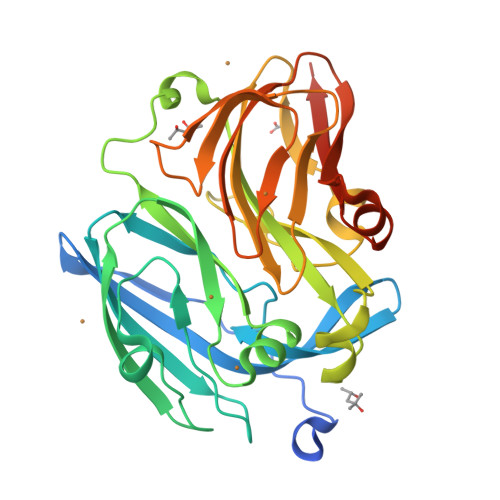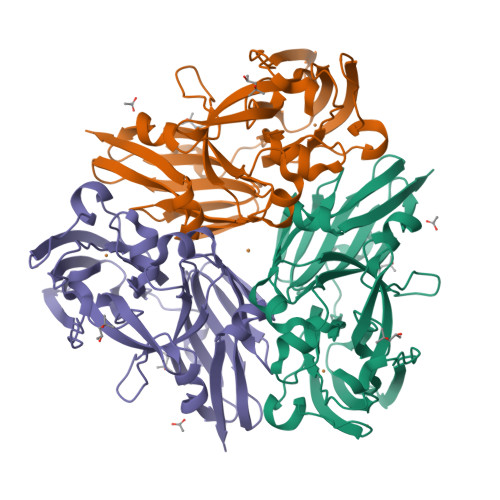Crystallographic study of dioxygen chemistry in a copper-containing nitrite reductase from Geobacillus thermodenitrificans.
Fukuda, Y., Matsusaki, T., Tse, K.M., Mizohata, E., Murphy, M.E.P., Inoue, T.(2018) Acta Crystallogr D Struct Biol 74: 769-777
- PubMed: 30082512
- DOI: https://doi.org/10.1107/S2059798318010082
- Primary Citation of Related Structures:
5YTL, 5YTM, 5YTN - PubMed Abstract:
Copper-containing nitrite reductases (CuNIRs) are multifunctional enzymes that catalyse the one-electron reduction of nitrite (NO 2 - ) to nitric oxide (NO) and the two-electron reduction of dioxygen (O 2 ) to hydrogen peroxide (H 2 O 2 ). In contrast to the mechanism of nitrite reduction, that of dioxygen reduction is poorly understood. Here, results from anaerobic synchrotron-radiation crystallography (SRX) and aerobic in-house radiation crystallography (iHRX) with a CuNIR from the thermophile Geobacillus thermodenitrificans (GtNIR) support the hypothesis that the dioxygen present in an aerobically manipulated crystal can bind to the catalytic type 2 copper (T2Cu) site of GtNIR during SRX experiments. The anaerobic SRX structure showed a dual conformation of one water molecule as an axial ligand in the T2Cu site, while previous aerobic SRX GtNIR structures were refined as diatomic molecule-bound states. Moreover, an SRX structure of the C135A mutant of GtNIR with peroxide bound to the T2Cu atom was determined. The peroxide molecule was mainly observed in a side-on binding manner, with a possible minor end-on conformation. The structures provide insights into dioxygen chemistry in CuNIRs and hence help to unmask the other face of CuNIRs.
Organizational Affiliation:
Department of Applied Chemistry, Graduate School of Engineering, Osaka University, 2-1 Yamadaoka, Suita, Osaka 565-0871, Japan.






















